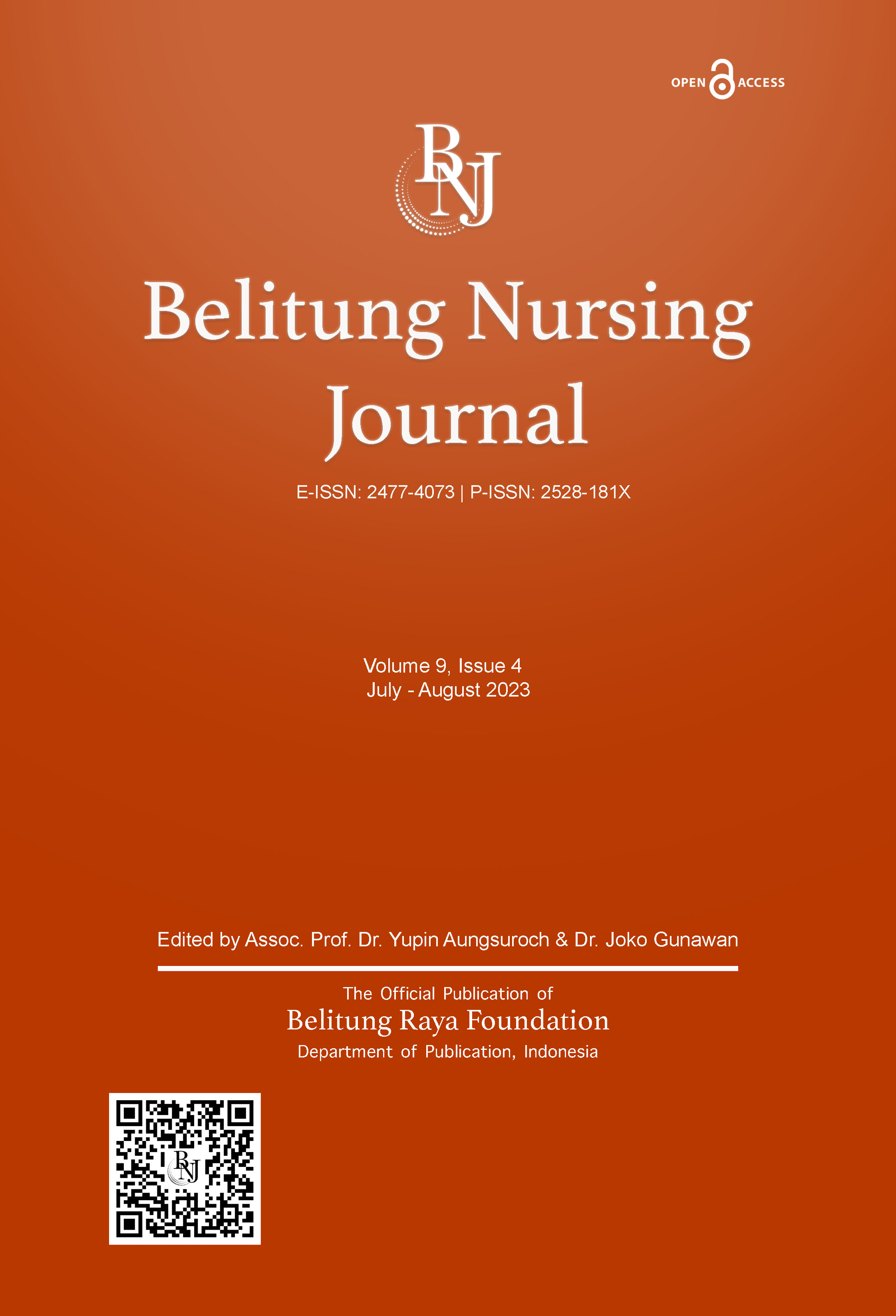Background
Self-esteem indicates a person’s personal evaluation and perception of their intrinsic value and significance as a human being (Pelham & Swann, 1989). Self-esteem, a cognitive and emotional appraisal of one’s worth, is a learned construct linked to individuals’ overall psychological wellness (Rosenberg, 1965). While high self-esteem is defined by a positive and favorable assessment of one’s own worth and value as a person, low self-esteem is characterized by having a negative impression of oneself. It has a significant impact on how someone thinks, feels, and behaves (Campbell, 1990). The self-esteem level can reveal an individual’s mental health, where lower levels of self-esteem are associated with mental disorders such as depression and stress (Azizi et al., 2013; Orth & Robins, 2013; Orth et al., 2008). Persons with low self-esteem tend to have a bad self-image, negative attitude, and loss of self-respect and self-confidence (Abdel-Khalek, 2016). However, others with high self-esteem tend to be confident, strongly driven, adept at problem-solving, and satisfied with their situations (LePine & Van Dyne, 1998; Neff, 2011). For these reasons, self-esteem is important and is required for an individual’s professional development and psychological well-being.
Nursing, as a profession, requires normal to high levels of psychological well-being and self-esteem to impact the professional development of a competent nurse. Within the field of nursing education, there exists a correlation between self-esteem and various factors, such as academic performance, clinical competence, and the overall well-being of students (Dancot et al., 2020; Rania et al., 2014). Nursing education can be challenging and stressful for students. According to Dimitriadou Panteka et al. (2014), student nurses experience extreme stress and anxiety during their education and interactions with educators. As a result, the concept of self-esteem is of great importance in nursing education, as it can identify these factors, what influences them, and how these impact the professional behavior and mental well-being of the students (Dimitriadou Panteka et al., 2014). Nursing students with high self-esteem are likelier to have a positive outlook on their education and future careers. They are better equipped to handle the challenges that come with their studies. In contrast, low self-esteem can negatively impact a student’s academic performance, career choices, and overall well-being. Hence, identifying elements that can influence self-esteem is a significant element of mental health and academic success among nursing students.
Numerous studies have examined nursing students’ self-esteem, underlining the significance of this matter. The existing body of literature indicates that self-esteem levels among student nurses vary across diverse countries and cultures. While some studies have reported high self-esteem levels among student nurses (Janati et al., 2011; Lopes Chaves et al., 2013; Shrestha et al., 2018), many have found moderate to low levels (Banappagoudar et al., 2022; Ibrahim, 2015; Mohamed, 2019; Pandey & Chalise, 2015; Suliman & Halabi, 2007). This variability may be due to differences in educational systems, cultural values, and individual factors. The findings of the majority of the studies identified that 73% to 96.9% of students had moderate self-esteem levels (Banappagoudar et al., 2022; Ibrahim, 2015; Mane, 2016). The results also revealed that male students had higher self-esteem levels (Hamaideh & Hamdan-Mansour, 2014; Ibrahim, 2015). The importance of self-esteem as a stress moderator was evident in many studies that reported its association with the psychological well-being of nursing students (Banappagoudar et al., 2022; Edwards et al., 2010; Ni et al., 2010). For instance, Banappagoudar et al. (2022) identified that the psychological state of student nurses is influenced by their self-esteem level. The results show that acquiring a higher level of self-esteem can result in better patient care (Banappagoudar et al., 2022). Regarding gender differences, some studies found that male students reported higher self-esteem levels (Banappagoudar et al., 2022; Ibrahim, 2015; Mohamed, 2019), while other studies indicated no statistical variances in the self-esteem levels between male and female students (Karagozoglu et al., 2008; Lopes Chaves et al., 2013). Regarding the differences in self-esteem levels among different years of study, some studies’ findings did not show statistical differences (Ghezelbash et al., 2015; Lopes Chaves et al., 2013). In contrast, other studies have revealed that students in advanced years show higher levels of self-esteem than other students (Banappagoudar et al., 2022; Ibrahim, 2015; Lo, 2002).
Numerous interrelated factors may influence the self-esteem of student nurses, or they may be correlated with it. Research has shown a significant correlation between self-esteem and academic performance (Hamaideh & Hamdan-Mansour, 2014; Saadat et al., 2012). Clinical experiences and training seem to have a significant impact on students’ level of self-esteem (Mahfouz et al., 2019; Zamanzadeh et al., 2013). On the other hand, studies have reported that nursing students are experiencing academic stress at different levels (low to high), in which students with higher levels of stress are likelier to have lower self-esteem (Edwards et al., 2010; Lavoie-Tremblay et al., 2022; Zheng et al., 2022).
The context of nursing education in Saudi Arabia has gone through different stages since its establishment in 1954 (AlYami & Watson, 2014). Initially, nursing education began with a nursing diploma program exclusively for male students. Since then, several organizations have served as nursing education providers, resulting in an inconsistent field expansion (Aljohani, 2020). In Saudi Arabia, nursing education has recently experienced notable growth and recognition, indicative of the country’s dedication to improving healthcare provisions (Al Dossary, 2018; Aljohani, 2020; Alsufyani et al., 2020). The Saudi government has undertaken various initiatives to expand nursing programs, enhance the curriculum, and attract highly qualified educators to address the increasing need for proficient healthcare professionals. In addition, Saudi Arabia is currently making significant investments in enhancing its nursing workforce to meet the changing healthcare demands of its population and donate to the overall enhancement of the healthcare system (Al Dossary, 2018; Aljohani, 2020; Alsufyani et al., 2020).
Although the field of nursing in Saudi Arabia has experienced significant progress in terms of educational advancements, challenges still exist that need to be addressed in order to establish and maintain a robust future for nurses who can provide quality nursing care for patients (Al Dossary, 2018; Alsufyani et al., 2020). As the primary objective is to produce highly skilled and empathetic nurses capable of providing quality care, understanding the level of self-esteem among Saudi student nurses is important for several reasons. First, it can help identify students who may be at risk of experiencing academic difficulties or mental health problems. Second, it can inform the development of interventions aimed at promoting positive self-esteem and well-being among nursing students. Third, it can contribute to the overall improvement of nursing education programs and the care quality delivered by future nurses.
While some studies have examined self-esteem amongst student nurses in other contexts, there is a need for context-specific research to understand better the self-esteem levels and factors that impact nursing students in this particular university. In addition, few studies in Saudi Arabia have explored the level of self-esteem among student nurses (Altaweel et al., 2023; Hamaideh & Hamdan-Mansour, 2014; Megahed & Mohammad, 2014). Therefore, this study aimed to assess the self-esteem level among nursing students at Majmaah University in Saudi Arabia and identify its related factors according to socio-demographic variables.
Methods
Study Design
A research study using a cross-sectional design was used to evaluate the level of self-esteem among student nurses, as it was appropriate for the study (Polit & Beck, 2018). The researcher in this design simultaneously assessed the study participants’ exposures and outcomes.
Samples/Participants
A convenience sampling method was used, which is appropriate for the study design. Convenience sampling is a technique where units are chosen for the sample based on their availability to the researcher (Polit & Beck, 2018). The sample size was calculated using Raosoft’s sample size calculator (Raosoft, 2004). That was calculated based on a confidence level of 0.95 and a margin of error of 0.05, which resulted in the need for at least 214 participants. Therefore, 346 student nurses were enrolled in this study as participants. The total number of students enrolled during the period of this study was 479 students over the four academic years, giving a response rate of 72.2%. The participants were students studying nursing at Majmaah University in Saudi Arabia.
Instruments
Utilizing Microsoft365 Forms, a self-reported questionnaire that consisted of two sections was used. The first section included socio-demographics, including gender, age, marital status, year of study, father’s education, physical health, mother’s education, psychological health, and grade point average (GPA). The content validity of the socio-demographic variables was ensured by conducting a thorough literature review to identify the most appropriate variables to be incorporated into the questionnaire. Furthermore, the researcher sought expert input and feedback to evaluate the appropriateness of the chosen variables (Polit & Beck, 2006). The subsequent portion included the use of the Rosenberg Self-Esteem Scale (RSES), which consists of a set of 10 statements that participants assess on a four-point Likert scale, ranging from a score of zero indicating significant disagreement to a score of three denoting strong agreement to a score of Rosenberg (1965). RSES is a widely used and validated measure for assessing self-esteem, with a Cronbach’s alpha that ranged between 0.61 and 0.9 (Gray-Little et al., 1997; Robins et al., 2001; Schmitt & Allik, 2005). For this study, the questionnaire’s reliability was measured with a Cronbach’s alpha of 0.84, considered within normal values. Self-esteem was calculated as the totality of the scores for all ten statements, with a range of 0 to 30, where a score of less than 15 suggests a low self-esteem level, a score between 15–25 indicates a moderate self-esteem level, and a score of more than 25 suggests a high self-esteem level.
Data Collection
Data were gathered in May 2023 through hard and electronic questionnaires sent to all students. An electronic questionnaire was sent to the students through their course instructors. A hard copy of the questionnaires was also collected from students by meeting with them after their classes. The researcher explained the aim of the study and its potential implications for the students. Students who agreed to participate gave their consent and completed the form.
Data Analysis
Data were analyzed using the Statistical Package for Social Sciences (SPSS). Descriptive and inferential statistics were employed to ascertain the degree of self-esteem and establish its correlation with socio-demographic characteristics. The statistics included frequencies, t-tests, and Chi-square tests.
Ethical Considerations
This research received approval from Majmaah University for Research Ethics Committee (MUREC). The ethical approval number is (MUREC-May.14/COM-2023/16-3). The student nurses were assured that their academic standing and progress would not be affected by their participation in the study. Participants were provided with information stating that their participation in the study was optional, and they were assured that their anonymity and privacy would be maintained. Furthermore, the participants were duly notified of their prerogative to voluntarily discontinue their involvement in the research endeavor at any given point.
Results
Characteristics of the Participants
The study’s sample consisted of 346 nursing students with a mean age of 20 years (SD = 1.58). Of the total, 216 were female (62.4%), and 130 were male (37.6%). Most of the students were single (96.5%). A total of 125 students were in the first year (36.1%), 95 students were in the second year (27.5%), 79 students were in the third year (22.8%), and 47 students were in the fourth year (13.6%). Regarding physical health, the majority of the students rated their physical health as good (46.8%). For psychological health, the students’ ratings varied, with the two most rated being good (32.4%) and average (32.1%). The majority of the students stated that their father’s education was high school/diploma (37.6%) and their mother’s education was primary school (34.7%). The mean GPA was 4.23 on a 5-point scale (Table 1).
| Socio-Demographic Variables | f | % |
|---|---|---|
| Gender | ||
| Male | 130 | 37.6 |
| Female | 216 | 62.4 |
| Marital Status | ||
| Single | 334 | 96.5 |
| Married | 12 | 3.5 |
| Year of Study | ||
| First year | 125 | 36.1 |
| Second year | 95 | 27.5 |
| Third year | 79 | 22.8 |
| Fourth year | 47 | 13.6 |
| Physical Health | ||
| Poor | 8 | 2.3 |
| Average | 80 | 23.1 |
| Good | 162 | 46.8 |
| Very Good | 38 | 11.0 |
| Excellent | 58 | 16.8 |
| Psychological Health | ||
| Poor | 56 | 16.2 |
| Average | 111 | 32.1 |
| Good | 112 | 32.4 |
| Very Good | 22 | 6.4 |
| Excellent | 45 | 13.0 |
| Father’s education | ||
| Primary school | 67 | 19.4 |
| Intermediate school | 59 | 17.1 |
| High school / Diploma | 130 | 37.6 |
| Bachelor’s degree or higher | 90 | 26.0 |
| Mother’s education | ||
| Primary school | 120 | 34.7 |
| Intermediate school | 54 | 15.6 |
| High school / Diploma | 80 | 23.1 |
| Bachelor’s degree or higher | 92 | 26.6 |
Descriptive Statistics of the Studied Variables
Table 2 displays that the average of the RSES scale items ranged from 1.02 to 2.53. The range of standard deviation was from 0.57 to 0.79. The overall mean of self-esteem was 20.19, with a standard deviation of 4.60. The score total range of self-esteem was between 0 and 30. According to the results, 265 students (76.6%) had a moderate self-esteem level, 53 students (15.3%) had a low self-esteem level, and 28 students (8.1%) had a high self-esteem level.
| No | Items | Mean | SD |
|---|---|---|---|
| 1 | On the whole, I am satisfied with myself | 2.26 | 0.70 |
| 2 | At times I think I am no good at all | 1.52 | 0.76 |
| 3 | I feel that I have a number of good qualities | 2.53 | 0.57 |
| 4 | I am able to do things as well as most other people | 2.53 | 0.58 |
| 5 | I feel I do not have much to be proud of | 1.89 | 0.78 |
| 6 | I certainly feel useless at times | 1.63 | 0.76 |
| 7 | I feel that I’m a person of worth, at least on an equal plane with others | 2.40 | 0.69 |
| 8 | I wish I could have more respect for myself | 1.02 | 0.79 |
| 9 | All in all, I am inclined to think that I am a failure | 2.03 | 0.71 |
| 10 | I take a positive attitude toward myself | 2.35 | 0.70 |
| Overall score of self-esteem | 20.19 | 4.60 | |
Table 3 presents the relationships between specific variables and self-esteem. The variable “Year of Study” revealed a distinct pattern, wherein first-year students (29.6%) and second-year students (22.8%) had higher proportions of moderate self-esteem. This pattern highlighted a correlation between year of study and self-esteem (χ2 = 24.932, p <0.001). Similarly, the variable “Physical Health” also played a significant role. Individuals reporting good physical health displayed a notable prevalence of moderate self-esteem (39.3%). There was a statistical association between physical health and self-esteem (χ2 = 59.916, p <0.001). Likewise, “Psychological Health” demonstrated a significant correlation with self-esteem (χ2 = 62.803, p <0.001). Individuals with good psychological health showed a higher proportion of moderate self-esteem (27.4%). Lastly, the variable “Father's Education” had a significant relationship with self-esteem (χ2 = 33.107, p <0.001). Individuals whose fathers had a high school diploma education showed a higher percentage of moderate self-esteem (17.9%).
| Variables | Self-Esteem Level | Chi-Square (p-value) | |||
|---|---|---|---|---|---|
| Low | Moderate | High | |||
| n (%) | n (%) | n (%) | |||
| Gender | Male | 25 (7.2) | 97 (28) | 8 (2.3) | 3.154 (0.599) |
| Female | 28 (8.1) | 168 (48.6) | 20 (5.8) | ||
| Marital Status | Single | 52 (15) | 255 (73.7) | 27 (7.8) | 0.471 (0.790) |
| Married | 1 (0.3) | 10 (2.9) | 1 (0.3) | ||
| Year of Study | First year | 15 (4.3) | 102 (29.6) | 8 (2.3) | 24.932 (<0.001) |
| Second year | 9 (2.6) | 79 (22.8) | 7 (2) | ||
| Third year | 25 (7.2) | 48 (13.9) | 6 (1.7) | ||
| Fourth year | 4 (1.2) | 36 (10.4) | 7 (2) | ||
| Physical Health | Poor | 0 (0) | 4 (1.2) | 4 (1.2) | 59.916 (<0.001) |
| Average | 8 (2.3) | 66 (19.1) | 6 (1.7) | ||
| Good | 13 (3.7) | 136 (39.3) | 13 (3.7) | ||
| Very good | 9 (2.6) | 29 (8.4) | 0 (0) | ||
| Excellent | 23 (6.6) | 30 (8.7) | 5 (1.5) | ||
| Psychological Health | Poor | 3 (0.9) | 44 (12.7) | 9 (2.6) | 62.803 (<0.001) |
| Average | 10 (2.9) | 90 (26) | 11 (3.2) | ||
| Good | 10 (2.9) | 95 (27.4) | 7 (2) | ||
| Very good | 9 (2.6) | 13 (3.8) | 0 (0) | ||
| Excellent | 21 (6.1) | 23 (6.6) | 1 (0.3) | ||
| Father’s Education | Primary school | 5 (1.4) | 49 (14.2) | 13 (3.7) | 33.107 (<0.001) |
| Intermediate school | 18 (5.2) | 38 (11) | 3 (0.9) | ||
| High school/ Diploma | 12 (3.5) | 108 (31.2) | 10 (2.9) | ||
| Bachelor’s degree or higher | 18 (5.2) | 70 (20.2) | 2 (0.6) | ||
| Mother’s Education | Primary school | 16 (4.6) | 89 (25.7) | 15 (4.3) | 11.567 (0.072) |
| Intermediate school | 14 (4) | 39 (11.3) | 1 (0.3) | ||
| High school/ Diploma | 11 (3.2) | 62 (17.9) | 7 (2) | ||
| Bachelor’s degree or higher | 12 (3.5) | 75 (21.7) | 5 (1.5) | ||
Discussion
This study aimed to assess the self-esteem levels among student nurses and their correlation with the students’ demographics characteristics. The female students comprised the majority, comprising 62.4%, which is common in nursing schools worldwide (Maurud et al., 2022; Zysberg & Berry, 2005). This appears to be predominantly a profession for females (Zamanzadeh et al., 2013). According to the findings, the majority of the participants (76.6%) had a moderate level of self-esteem, which is similar to most studies that stated an average of 80% of students have a moderate self-esteem level (Altaweel et al., 2023; Banappagoudar et al., 2022; Ibrahim, 2015; Mane, 2016). This range of self-esteem levels seems healthy for the students and enables them to maintain steady progress toward growth and improvement.
The study shows significant relationships between self-esteem and the factors such as the year of study, physical health, psychological health, and father’s education. This result aligns with previous studies that indicate a relationship between the students’ physical and psychological health with self-esteem (Furegato et al., 2008; Karaca et al., 2019; Ni et al., 2010). Studying nursing seems to be a stressful experience that strains nursing students’ physical health and psychological well-being (Walker et al., 2014). This, for instance, was evident in a study conducted by Ni et al. (2010), who showed that the mental health of nursing students was related to their level of self-esteem. Another study further explored this issue and showed significant differences between depression and self-esteem in student nurses (Azizi et al., 2013). This suggests that adapting methods to enhance self-esteem levels among nursing students can overcome such mental disorders.
In this study, only 8.1% of the students had a high level of self-esteem, which contradicts other studies conducted in different countries that found that most students had high self-esteem levels. For instance, a study conducted by Shrestha et al. (2018) reported that 95.3% of the student had a high self-esteem level, and only 4.7% had a low self-esteem level. In addition, another study conducted in Brazil by Lopes Chaves et al. (2013) found that 68% of the students had a high self-esteem level, and only 2% had a low self-esteem level. These variations might be related to cultural variety, variations in university systems, and variations in the depression measurement tools utilized in the research.
The study concluded that our study’s findings could result from the influence of the professional nursing perspective among the students (Lopes Chaves et al., 2013). This may suggest that nursing is not yet highly regarded among the students in this study, seeing their worth and value as future nurses. This matter was mentioned by AlYami and Watson (2014), who stated that nursing in Saudi Arabia is not generally viewed as a suitable profession, especially for women. Still, the public image of the nursing profession has been reported to be viewed negatively (Elmorshedy et al., 2020). This also indicates evidence that the student’s confidence is low, as the relationship between students’ self-esteem and confidence is significant (Suliman & Halabi, 2007). The study’s findings explained the fact that nursing students need educational programs about self-esteem to enhance their self-worthiness, well-being, and motivation towards learning and success. Hence, improving self-esteem levels has been recommended as it can avert emotional and behavioral issues (Leary et al., 1995).
Limitations of the Study
Despite its significant results, the research has certain limitations. First, since data were only gathered from one Saudi Arabian university, it is difficult to generalize the findings to other nursing students; thus, more research on nursing students’ self-esteem is needed. Second, the questionnaire used to gather the data was self-administered, which might lead to reporting bias owing to how prospective participants perceive the questions.
Implications of the Study for Nursing Education and Recommendations for Future Research
The study’s results can be used for nurse educators to build educational and awareness programs for student nurses to increase their self-esteem. Understanding the factors related to students’ self-esteem identified in this study helps build the components of such awareness programs. Assessing students’ information pertaining to these factors is essential in tailoring the programs. Caring for physical health and psychological health, as well as understanding the values of the self, should be addressed. Future research can further explore self-esteem using different methodological approaches, such as qualitative studies or mixed methods. It is also recommended that future research investigate the relationship between self-esteem and other related factors among student nurses.
Conclusion
Most of the participants had moderate self-esteem levels. Self-esteem is a pivotal factor influencing the trajectory of nursing students as they evolve into future healthcare professionals. The cultivation of a sense of self-worth and overall well-being among student nurses contributes significantly to the refinement of their character and the development of their professional identity. It is worth noting that a student nurse grappling with low self-esteem could potentially exert adverse effects on their physical and psychological health, subsequently influencing their learning journey. Consequently, it becomes imperative for nursing educators within universities to devise effective strategies aimed at enhancing self-esteem among their nursing student cohort.









